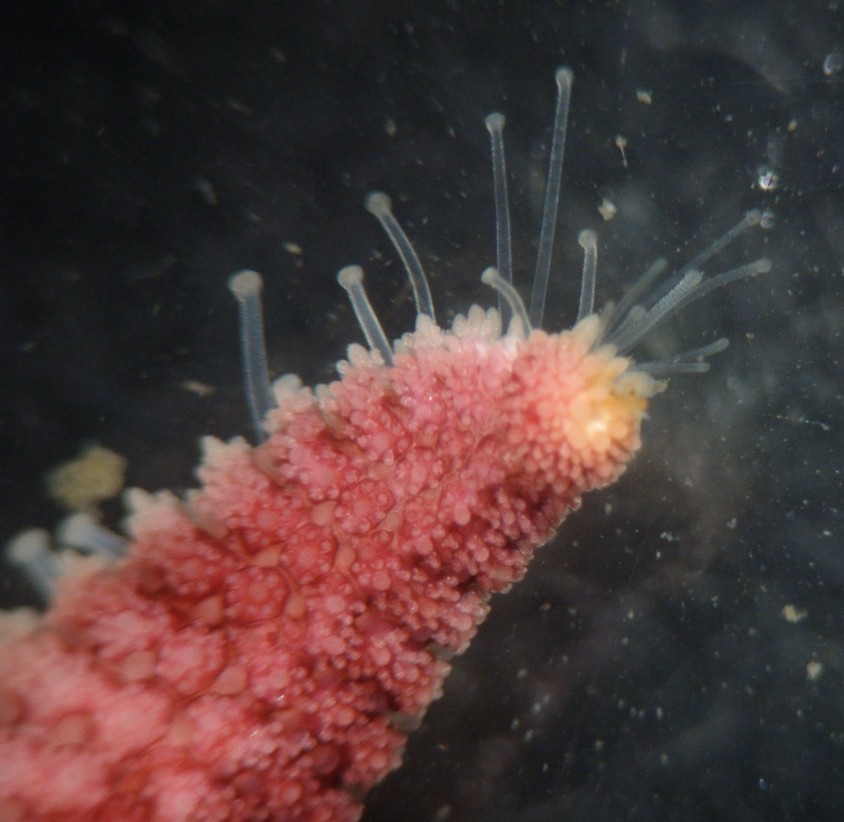Leptasterias aequalis (Stimpson, 1862)Common Names: Colorful six-rayed star, six-rayed Star, broad six-rayed star, delicate six-armed star |
|
| Synonyms: Leptasterias aequalis is thought to be a hybrid between L. hexactis and L. epichlora. | 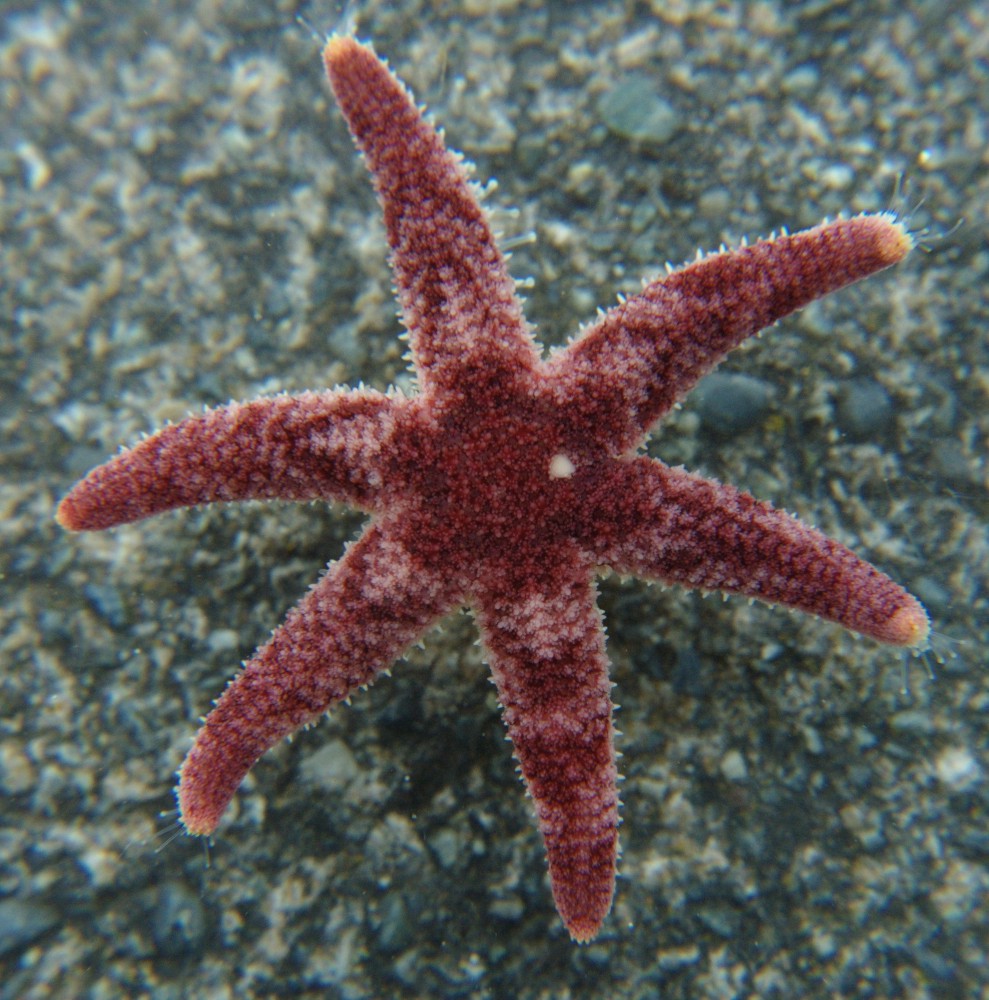 |
| Phylum Echinodermata
Class Asteroidea Order Forcipulatida Family Asteriidae |
|
| Leptasterias aequalis from lower intertidal of Sares Head, 6-2011. Total arm spread 4 cm. | |
| Photo by: Dave Cowles, June 2011 | |
How to Distinguish from Similar Species: Species of Leptasterias are very hard to tell apart, and L. aequalis is probably a species complex. This species is very similar to Leptasterias pusilla but can be distinguished by its large, flat aboral spines, thicker arms, and darker color. L. hexactis is usually olive-green or indigo, and its pedicellariae are embedded in tissue at the base or midway up the aboral spines. L. epichlora is usually mottled and blue-gray, dark green, or indigo and its pedicellariae are few and randomly arranged around the aboral spines.
Note from Kozloff, 1996: "Specimens keying to Leptasterias hexactis are now believed to belong to three recognizable entities. They are distinguished to some extent by biochemical properties, but the following visible features will usually enable one to separate them. Leptasterias hexactis (Stimpson, 1862): small pedicellariae (as distinguished from larger pedicellariae) especially abundant around the aboral spines, generally embedded in tissue either at the base or about midway on the spines, and forming a characteristically wreathlike arrangement; color of aboral surface usually dark olive-green or indigo. Leptasterias epichlora (Brandt, 1835): small pedicellariae few and randomly arranged around the aboral spines; color of aboral surface commonly indigo, blue-gray, or dark green, usually mottled. Leptasterias aequalis (Stimpson, 1862) (believed to be a hybrid of L. hexactis and L. epichlora): small pedicellariae usually numerous and randomly arranged around the aboral spines; color of aboral surface extremely variable, ranging from olive-green, indigo, or gray to coral-red or orange (in our region, the last two colors not often noted in the other two species)."
Geographical Range: L. aequalis ranges from Vancouver Island, southern BC. Canada to Santa Catalina Island in the Channel Islands, southern CA.
Depth Range: Intertidal zone under rocks or algae.
Habitat: Common on rocky shores that are exposed to the surf.
Biology/Natural
History: L.
aequalis is known to cling very tightly to rocks and it has
the ability
to conform closely to irregularities in the surface. It is a
carnivore
and feeds on sea cucumbers, littorine snails, limpets, chitons, small
mussels,
barnacles, and other small animals, including dead animals. L.
aequalis often selects large, hard to capture prey that is
often rich
in calories. This type of prey supplies most of the sea
star’s energy.
It is often in direct competition with the much larger sea star, Pisaster
ochraceus for food. Breeding occurs from
November to April
in the Puget Sound. The eggs are yellow, yolky, and about 0.9
mm
in diameter. A unique feature of this species is that the
broods
of eggs (ranging from 52 – 1,491 eggs, variable based on the size of
the
female) are held by the female in the region of the mouth below the central
disk. Because of this, brooding females cannot
flatten themselves
against the substratum and are only anchored by their outermost tube
feet. Unfortunately, they are often dislodged by
the waves, losing
their eggs. It is necessary for the female to clean the egg
masses,
and if she does not do this then the eggs quickly die. The
presence
of the eggs blocks the female’s mouth and she will not feed while
brooding,
even if there is food readily available. The development of
the embryos
is direct and individuals reach maturity within 2 years.
| Return to: | |||
| Main Page | Alphabetic Index | Systematic Index | Glossary |
References:
Dichotomous Keys:
Carlton, 2007
Kozloff, 1987, 1996.
General References:
Harbo,
2011
Kozloff,
1993.
Lamb
and Hanby, 2005
Lambert,
2000
Morris
et. al. 1992.
Sept,
1999
Scientific
Articles:
Chia, F. S., 1966. Systematics of the six-rayed sea star Leptasterias
in the vicinity of San Juan Island, Washington. Systematic
Zool.
15: 300-306
Hrincevich, Adam W., Axayacatl Rocha-Olivares, and David W. Foltz,
2000. Phylogenetic analysis of molecular lineages in a species-rich
subgenus of sea stars (Leptasterias Subgenus Hexasterias). American Zoologist 40:3 pp. 365-374
Kwast, K.E., D.W. Foltz, and W.B. Stickle, 1990. Population genetics and systematics of the Leptasterias hexactis (Echinodermata: Asteroidea) species complex. Mar. Biol. 105: 477-489
General Notes and Observations: Locations, abundances, unusual behaviors, etc.:
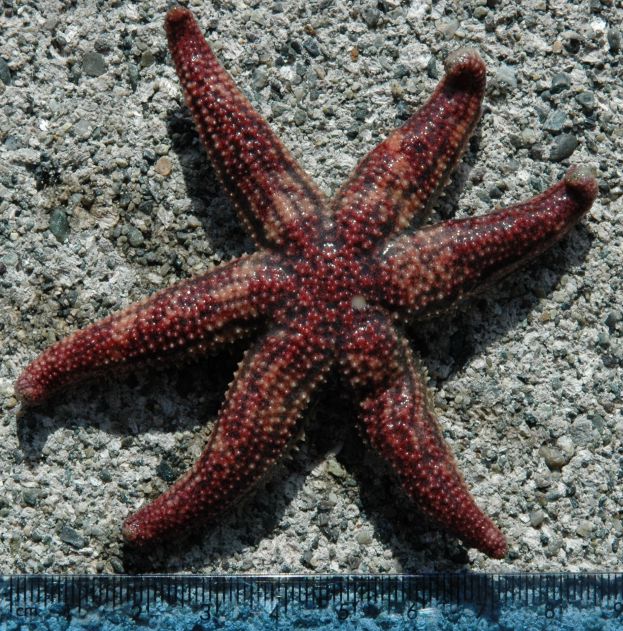
Another individual with a reddish coloration.
Photo by Dave Cowles, July 2005
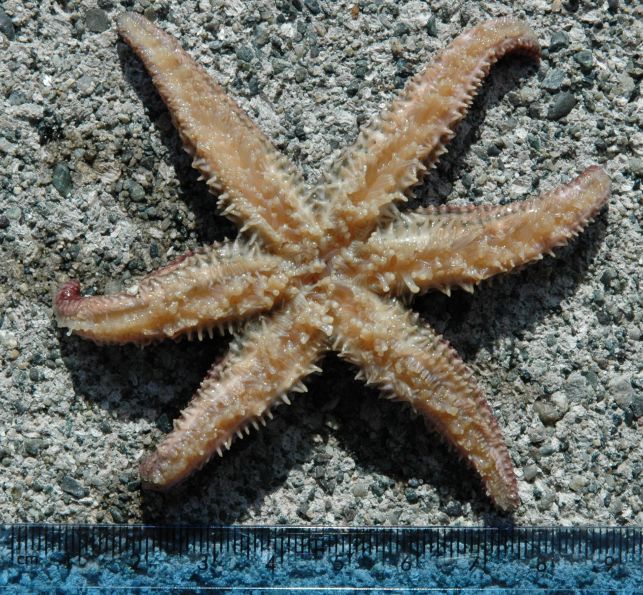
The oral
side
of the individual above.
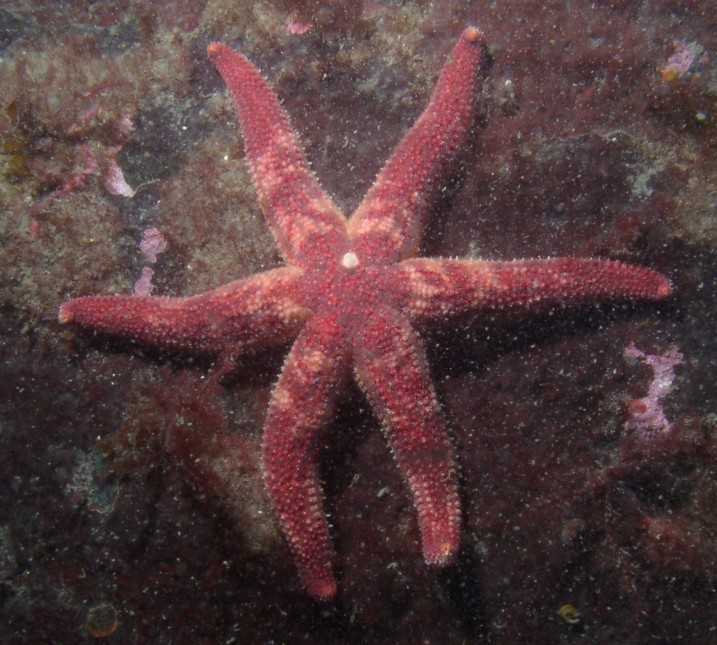
An underwater photo by Kirt Onthank, June 2007

This closeup of the aboral
side of the central
disk
shows the multitude of ossicles,
including spines and pedicellariae.
Sacklike papulae
are
seen as well, as is the madreporite.
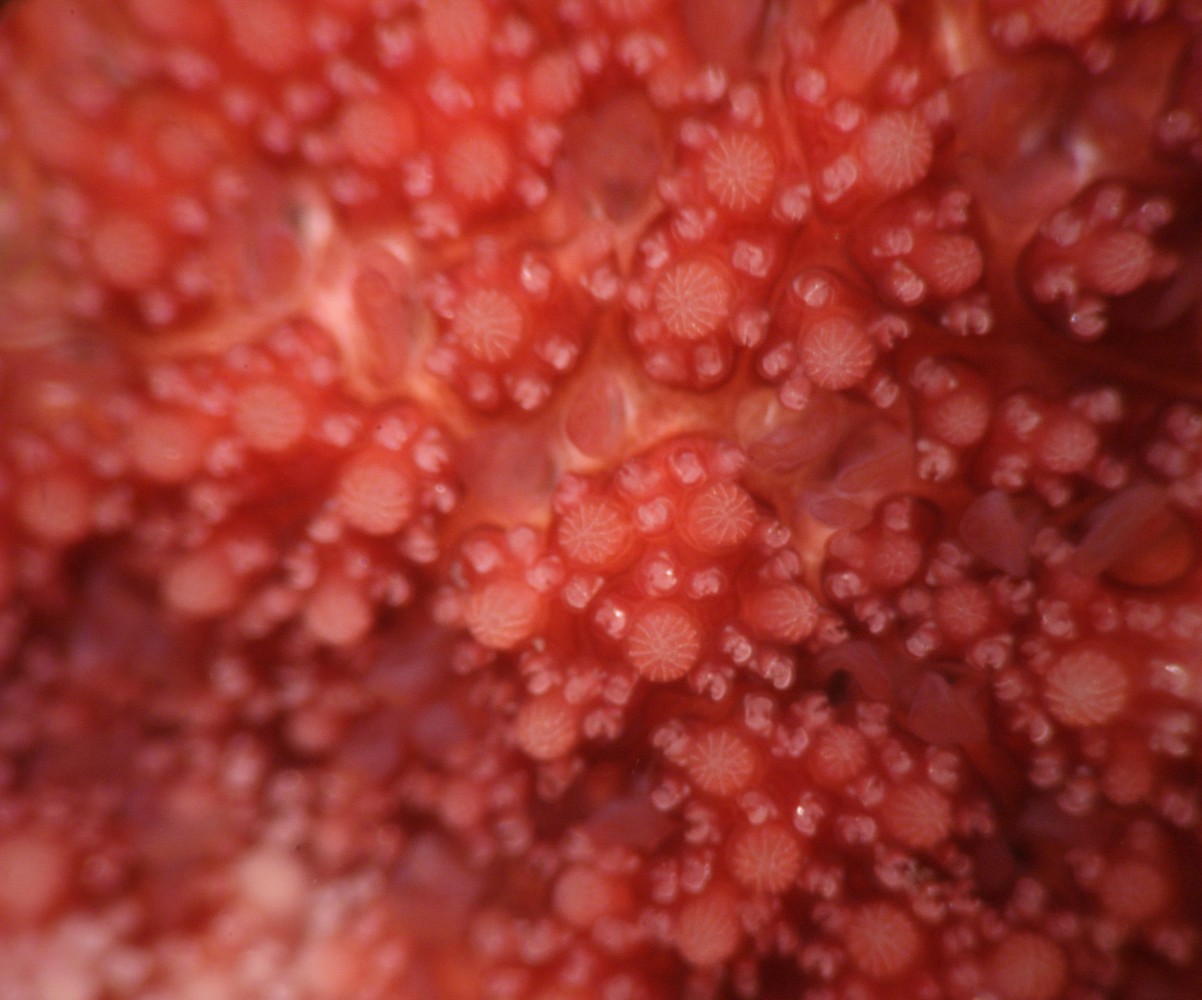
This even closer view shows details of the spine ossicles
with their mushroom-shaped tips, and the pedicellariae.
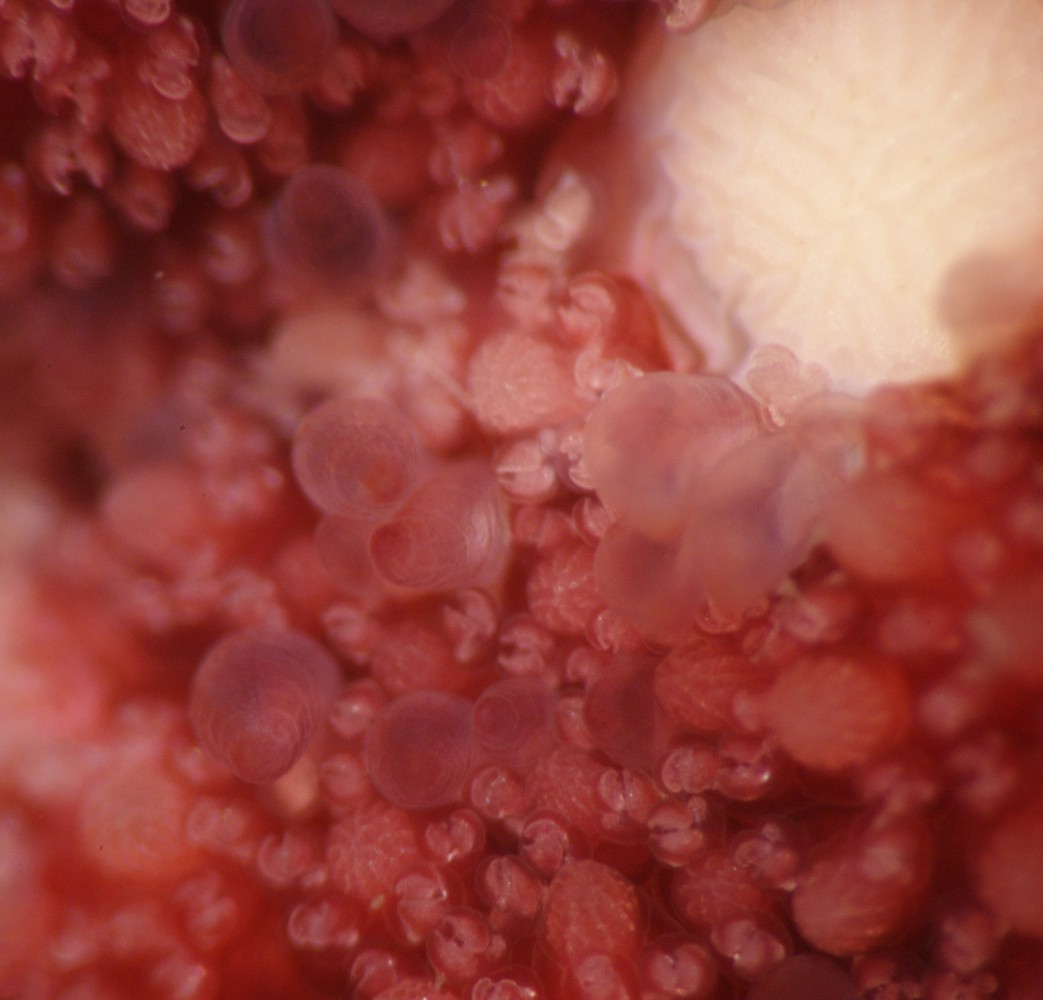
Closeup view near the madreporite.
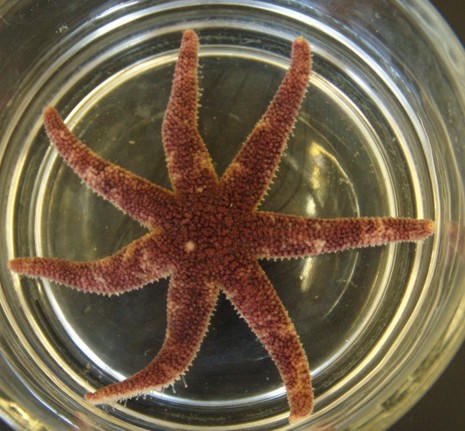
This large individual is about 10 cm in diameter and has 7 rays. Photo by Dave Cowles, July 2012
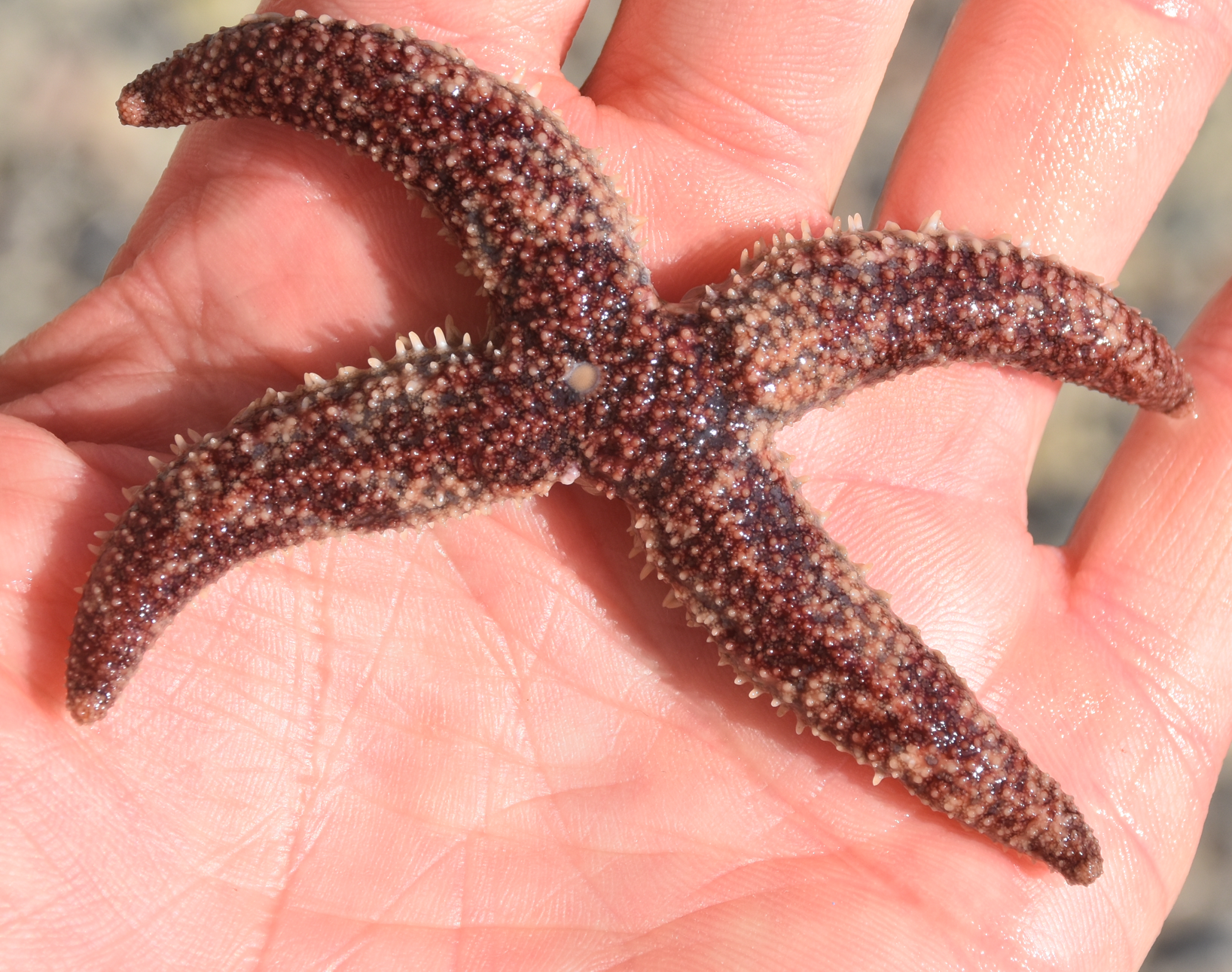 |
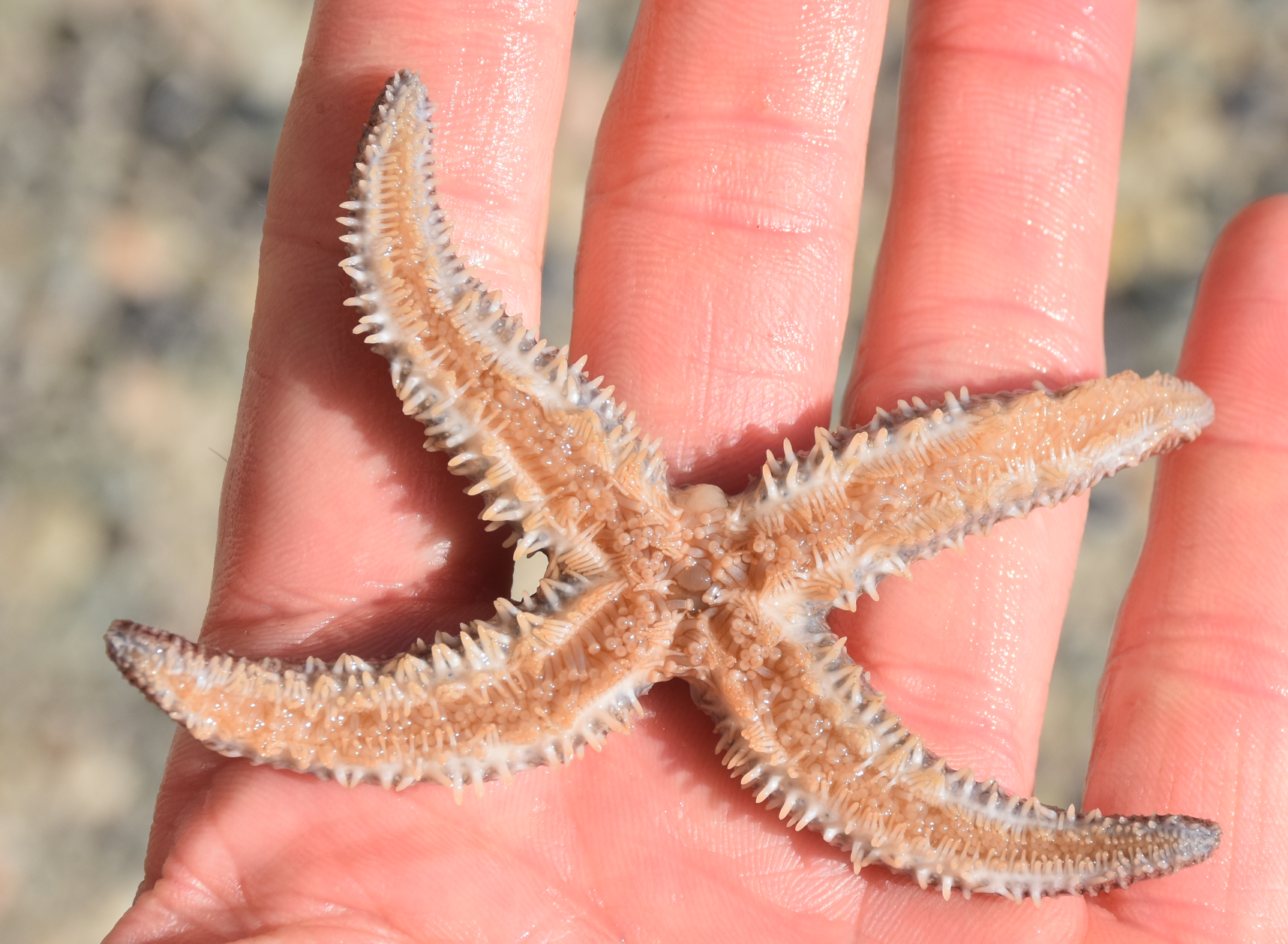 |
| This individual has only 4 rays. Photo by Dave Cowles, July 2021 | |
Authors and Editors of Page:
Melissa McFadden (2002): Created original page
Edited by Hans Helmstetler 12-2002, Dave Cowles 2005, 2011-
